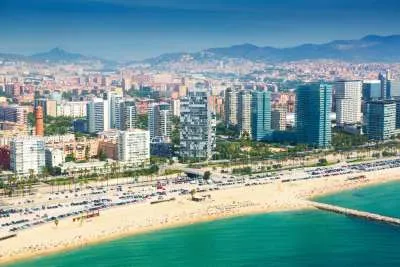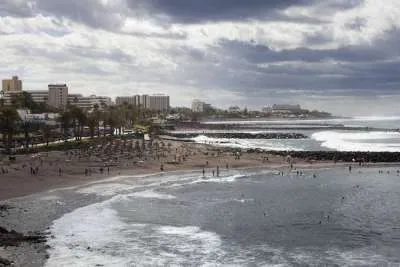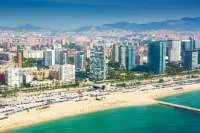Travel in the Canary Islands: the secrets of a profitable and comfortable stay
- 20-12-2024
- Travel
- collaborative post
- Photo Credit: Freepik
Whether you’re looking to bask in the sun, explore natural wonders, or enjoy a peaceful getaway, the Canary Islands are the perfect place. Among the various islands, Gran Canaria stands out for its diversity of landscapes, from golden beaches to rugged mountains, making it a popular destination for all kinds of travellers.
In this article, we’ll explore the best times to visit the Canary Islands, taking into account the weather, crowds, and available activities. And if you’re planning your trip, make sure to check out the latest free bet offers for some added fun while you plan your holiday.
Why the Canary Islands Are Great Year-Round Destinations
Before we delve into the details of each season, it’s important to note that the Canary Islands enjoy a subtropical climate, which means temperatures stay moderate throughout the year.
With warm winters and pleasant summers, you’re guaranteed an enjoyable stay regardless of when you visit. However, depending on your preferences for weather, activities, and crowds, certain times of the year may be more suitable than others.
Winter (December to February): A Warm Escape from the Cold
Winter in the Canary Islands is a fantastic option for those looking to escape colder climates. While much of Europe and North America experience harsh winter weather, Gran Canaria and the rest of the Canary Islands remain relatively warm, with temperatures averaging around 18-22°C (64-72°F). This makes the islands particularly attractive to sun-seekers and those in need of a break from the cold.
Winter also coincides with the holiday season, making it a great time to enjoy festive events, shopping, and cultural experiences. However, be mindful that this is also the peak tourist season, so you can expect higher prices, especially for accommodation and flights. If you're planning to travel during this time, it’s advisable to book in advance.
For those interested in Canary Islands culture, you’ll find that the islands often host exciting events during the winter months, including the Santa Cruz de Tenerife Carnival (usually held in February) which is one of the biggest and most vibrant celebrations in the world. If you're lucky, you might catch this lively event during your stay.
Spring (March to May): Pleasant Weather and Fewer Crowds
Spring is arguably one of the best times to visit the Canary Islands. The weather is perfect—not too hot, and not too cold—making it ideal for outdoor activities like hiking, cycling, and exploring the many natural parks and reserves on Gran Canaria. During this season, temperatures range from 19-24°C (66-75°F), which is comfortable for spending time on the beach or exploring the island's interior.
One of the key benefits of visiting in spring is the lower number of tourists. Since this is just before the summer rush, you can enjoy a more peaceful experience without the crowds. This also means that you can find more affordable prices for accommodation and attractions compared to the high season.

Additionally, spring is when the Canary Islands’ flora is at its most beautiful. The islands come alive with colourful flowers, making it a wonderful time for nature lovers. Spring is also the season for various cultural and sports events, so keeping up with Gran Canaria news can help you discover what’s happening during your trip.
Summer (June to August): Hot Weather and Peak Tourist Season
Summer in the Canary Islands brings hot, sunny weather, with temperatures reaching up to 26-30°C (79-86°F) during the day. If you're someone who loves the heat and long beach days, then summer is the perfect time for you.
The beaches on Gran Canaria are at their best, and you can enjoy water sports like surfing, windsurfing, and kiteboarding. With the sun shining nearly every day, it’s also an excellent time for sightseeing and outdoor adventures.
However, be prepared for higher tourist numbers and more expensive rates on flights and accommodation. The islands can get crowded during the summer months, especially in popular resort areas. Additionally, with the increase in tourism, you may encounter some challenges in finding quieter spots, particularly in the main tourist hubs like Playa del Inglés or Maspalomas.
Despite the crowds, summer offers a lively atmosphere, with beach parties, outdoor concerts, and festivals taking place. If you enjoy vibrant events, check out the local Canary Islands news to see what's on during your visit.
Autumn (September to November): Ideal for a Relaxing Getaway
Autumn is another excellent time to visit the Canary Islands. Temperatures remain warm but not excessively hot, with average highs around 24-28°C (75-82°F). The sea is still warm enough for swimming, and the weather is perfect for hiking and sightseeing. The crowds from summer start to diminish, making it an ideal time for those seeking a more relaxed experience without the peak-season rush.
September and October are particularly great months because the weather is still very pleasant, and the islands are less crowded. By November, the weather may start cooling down a little, but it’s still very comfortable, especially for outdoor activities. In autumn, you’ll also find that prices for accommodation and flights are lower than during peak summer months.
This season also brings some rain, but it’s usually in the form of short, light showers rather than prolonged downpours. If you’re interested in rain news, you’ll find that rain showers are common in the autumn months, but they’re usually brief and won’t spoil your holiday.
When to Avoid the Canary Islands
Though the Canary Islands are a great destination throughout the year, there are a few factors to consider when planning your trip. The biggest disadvantage of visiting during winter is the crowds, especially around the Christmas and New Year holidays. Similarly, the summer months can be quite busy in popular tourist areas. If you’re someone who prefers a quieter experience, it might be best to avoid these peak periods.
Additionally, if you’re travelling with a tight budget, you may want to avoid the high season (winter and summer), when prices tend to skyrocket. Spring and autumn offer the best balance of good weather, fewer crowds, and lower prices.
Finding the Perfect Time for Your Visit
In conclusion, the best time to visit the Canary Islands depends on your personal preferences and what you want from your holiday. Winter is ideal if you're escaping the cold, spring and autumn are perfect for mild weather and fewer crowds, and summer is great for those who love the heat and lively atmospheres.
Regardless of when you choose to visit, Gran Canaria and the entire archipelago offer a variety of activities and experiences that make every season special.
Other articles that may interest you...
Trending
Most Read Articles
1.
2.
Featured Videos
A Vision of Elvis Tenerife Promo
- 10-05-2025
TEAs 2025 Highlights
- 17-11-2025



























































